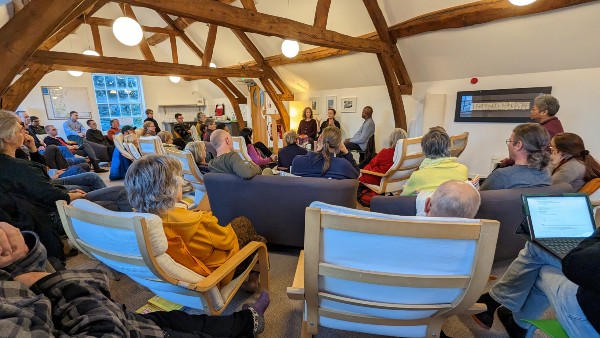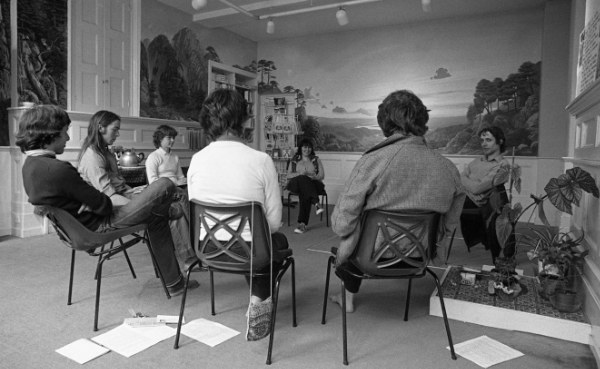Governance resources
Aimed at Chairs, Directors and Trustees (board members)
Any questions or suggestions, please email:
info@triratnadevelopment.org

Legal requirements
As trustees, board members, directors or Chairs of a legal entity, you have responsibilities that will sometimes feel weighty.
But knowledge is power (and freedom from anxiety!) so let’s share our knowledge…
Some basics
- be clear what sort of legal entity you are
- know how to refer to your constitution (governing document)
- know when you are required to report, submit accounts etc
- know what information/changes you need to let authorities know
- know what records of meetings are needed
- know what number of people constitutes a ‘quorate’ meeting
Setting up a UK charity
A Charitable Incorporated Organisation (CIO) is the form that the Charity Commission now suggest charities use – it has the benefit of limiting the liability of the trustees.
It is not that hard to do, honestly! The attached documents provide some helpful samples and advice but let us know if you think there is an important omission (info@triratnadevelopment.org) – the Development Team are not experts in charity law but will do what they can to help!
Please refer to our guide to setting up a charity in England or Wales.
Some Triratna centres will still use an older constitution (live google doc) and pdf-version which we include for reference
This may be a useful overview document
Some policies you may need
- Financial Control policy (here’s an example)
Risk Management
Risk management is something all organisations should be concerned about. Firstly here are some websites that will help:
https://www.gov.uk/government/publications/charities-and-risk-management-cc26
And some other documents and examples to help:
- Charities and risk management – UK Gov (pdf)
- example of risk review by Bristol
- another sample
- one from the LBC
- a template you could use
- and another template!

ECA meeting at Adhisthana, Jan 2023
How to run meetings
A checklist
Before the meeting:
- plan the agenda in conjunction with other officers
- decide which items will be included, the purpose of their being brought up at the meeting, roughly how long each one should take, in which order they should come and who will introduce each on
- be well briefed about each item
- ensure all necessary background papers are sent out with the agenda beforehand
During the meeting:
The role of the Chair is to ensure full communication and effective decision making.
a) Communicate
- start the meeting
- welcome new members
- make any necessary introductions
- set the scene
- state the objectives of the meeting and each item
b) Control
- maintain control
- set out any time limits
- allow flexibility and freedom of expression
- keep to the agenda
- ensure time is used effectively
- ensure that proper minutes are taken
c) Co-ordinate
- highlight the areas of common agreement
d) Coax
- ensure full participation
- draw out quiet members
e) Compare
- weigh up contributions impartially
f) Clarify
- ensure everyone understands what is being discussed
- ensure that if jargon and abbreviations are used, all present understand them
g) Summarise
- ensure that when decisions are made they are recorded together with who is going to implement them and when
At the end of the meeting:
- check the date of the next meeting
- agree what special items will be put on the agenda of the next meeting and what work needs to be done, and by whom
- ensure that the minutes will be written up and checked by the Chair before being sent out amd clarify when they will be available

LBC council meeting in the LBC reception room. Early 1980s : © Copyright Urgyen Sangharakshita Trust (see Triratna Picture Library)
Trustees or board/council members, Chairs & Presidents
What trustees need to know
Charity Commission’s advice
The Triratna Trustees Handbook (live google doc)
The Triratna Trustees Handbook June 2023 pdf
UK mainly, but of general interest:
An organisation called Charity Excellence have some good resources for trustees:
- What Is Good Governance & How To Do It Well
- 20 Ways To Be A Good Trustee
- How To Increase Trustee Board Engagement
- 20 Ideas To Engage Your Trustees In Fundraising
- How To Recruit Trustees For Your Board
- How To Make Reports More Effective & Less Work
- How To Tackle The Lack Of Charity Trustee Board Diversity
You can also use the 6 short videos in the Charity Excellence
You Tube Governance Playlist for trustee induction and/or to create your own trustee training programme.
The role of the Chair - various info
- ECA handbook (live google doc)
- ECA handbook (May 2023 pdf)
- ECA aims and objectives
- other resources and guidelines:
The Association of Chairs have a lot of useful information (UK-based, but of general interest) www.associationofchairs.org.uk
The role and importance of the President
This document has everything you need to know.

